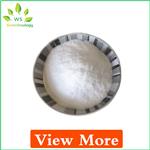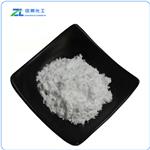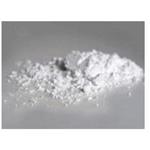Description
Calcium hydroxyapatite has a unique structure in
that it is conductive along the hydroxide channels.
OH
- ions lie at (1/4/,1/4,1/4) and (3/4/,3/4,3/4) on
the c-axis and charge-carrying protons are responsible
for the observed conductivities in M10(PO4)6(OH)2. The
H
+ migration between the electroattractive ion (O2)
to give molecular H2O in matrix channels carries charge
and the resulting conductivity.
The unit cell consists of two triangular prismatic subcells
forming a rhombic prism with vertical sides. There
are two horizontal mirror planes at the OH levels of 1/4
and 3/4 of the c-axis. In addition, there is a center of
inversion exactly in the center of each vertical face of
each subcell.
Chemical Properties
Tricalcium phosphate is an odorless and tasteless powder that is stable in air. Tribasic calcium phosphate consists of a
variable mixture of calcium phosphates having the approximate composition of 10CaO·3P2O5·H2O.
Chemical Properties
white powder
Occurrence
Occurs in nature as the minerals: oxydapatit, voelicherite, whitlockite.
Uses
Prosthetic aid (artificial bone and teeth).
Uses
Hydroxyapatite and tricalcium phosphate are bioactive ceramic materials and they find applications as bone grafts, fillers and coating material for metal implants.
Uses
In the 1970s, it was found that sintered calcium
hydroxyapatite, (Ca10(PO4)6(OH)2 (abbreviated as
CaHap), possessed excellent biocompatibility and nontoxicity
with femur and mandible bones. Since then,
CaHap has been used as a biomaterial for artificial teeth
and bones and as a filler for cements and polymers.
Today, bone fillers made of CaHap are widely used in
the medical and dental fields. In the 1980s, it was found
that sintered CaHap has a good compatibility with skin
tissues. Hence, percutaneous devices based on CaHap
have been developed and applications have included
continuous ambulatory peritoneal dialysis and intravenous
hyperalimentation systems, blood pressure
measurement and blood access for nutrition. Recently,
many researchers have studied the chemistry of apatites,
particularly CaHap, and have found various applications,
such as artificial teeth and bones, ion exchangers,
adsorbents for chromatography to separate proteins and
enzymes, catalysts, ionic conductors, temperature and
gas sensors, etc.
Preparation
The technical product is also known as “bone ash.” Commercial preparation from phosphate rock.
Definition
The major constituent of bone and tooth mineral. It is finely divided, crystalline, nonstoichiometric material rich in surface ions (carbonate, magnesium, citrate), which are readily replaced by fluoride ion, thus affording protection to the teeth.
brand name
Alveograf (Sterling Winthrop); Periograf (Sterling Winthrop).
General Description
Bone and tooth implant materials have been prepared from polycrystalline hydroxyapatite. The compressive, flexural, torsional and dynamic torsional strengths of polycrystalline hydroxyapatite were investigated. Electrophoretic deposition of hydroxyapatite on to flat titanium plate material has been studied.
Flammability and Explosibility
Not classified
Pharmaceutical Applications
Modified hydroxylapatite, also frequently called hydroxyapatite and better known as bone mineral, makes
up ~50% of our bones. Hydroxylapatite is a natural form of the mineral calcium apatite, whose formula is usually denoted as Ca
10(PO
4)
6(OH)
2. Modifications of hydroxylapatite can also be found in the teeth, and a
chemically identical substance is often used as filler for replacement of bones, and so on. Nevertheless, despite
similar or identical chemical compositions, the response of the body to these compounds can be quite different.




